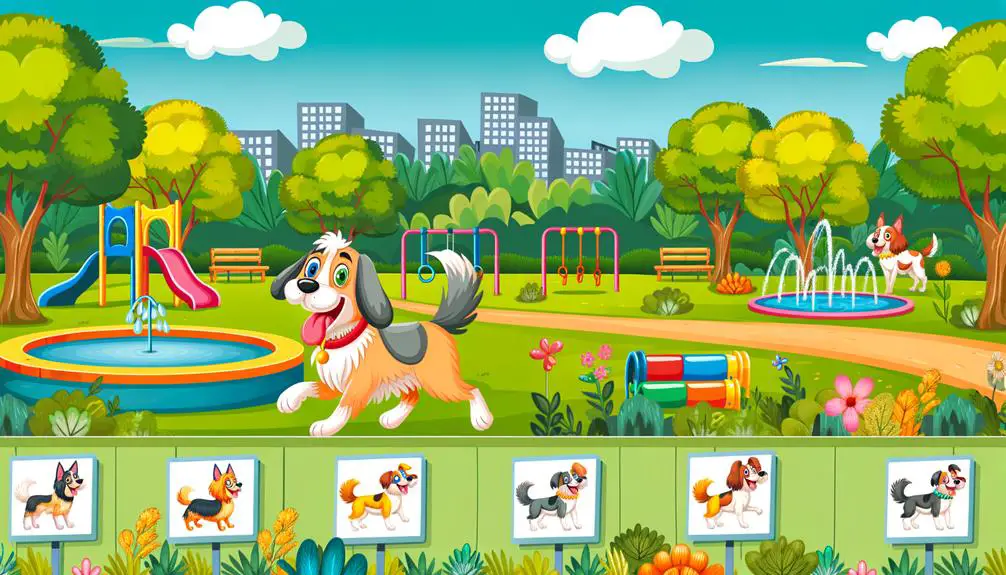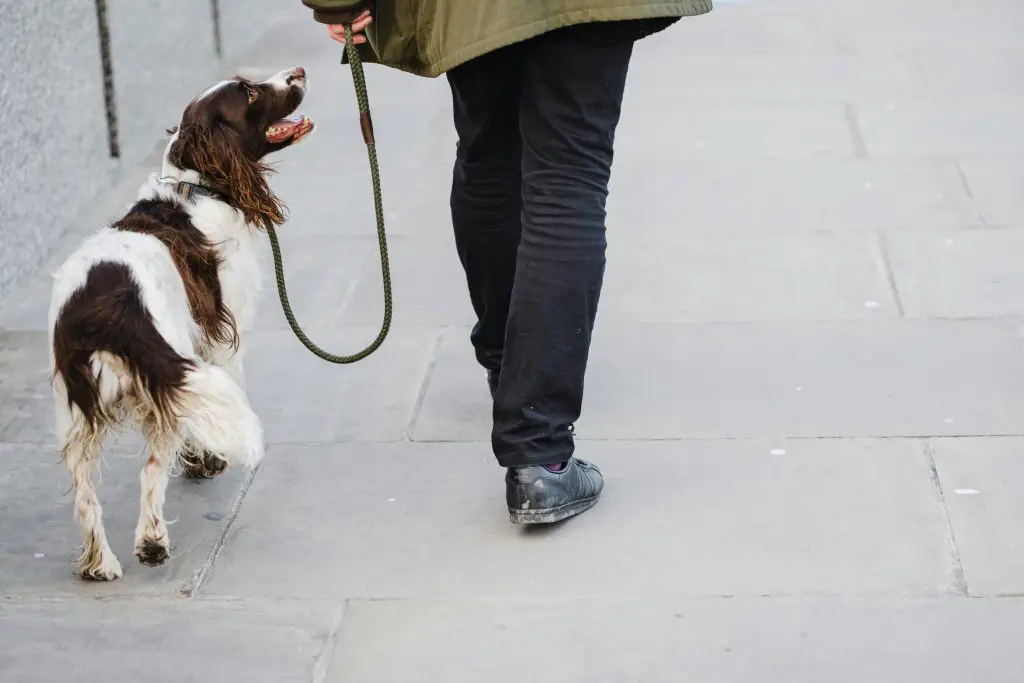While a routine walk might keep your dog healthy, spicing it up can turn the mundane into an adventure. Instead of sticking to the same path, try new routes that engage your dog’s senses and reduce boredom. Integrating interactive toys not only keeps them entertained but also sharpens their problem-solving skills.

Exploring natural trails offers physical exercise and mental stimulation, a win-win for both of you. Incorporating training games during your walks can enhance obedience and focus.
And don’t forget about playdates—they’re perfect for social skills and reducing anxiety. Curious about how to get started? Let’s explore these tips further.
Table of Contents
1. Try New Routes With Your Dog
Exploring new routes can greatly enhance your dog’s walking experience by stimulating their senses and reducing boredom. When you engage in urban exploration, your dog encounters new smells, sights, and sounds, which can be very enriching.
Diverse environments, such as bustling city streets or quiet suburban paths, offer varied stimuli that can keep your dog mentally and physically engaged.
This post contains affiliate links. However all the information provided on this site are my own honest opinions. See more in Disclaimer.
Consider taking scenic detours through parks or along waterfronts. These areas provide a pleasant change of scenery and additional opportunities for sensory exploration. Your dog will appreciate the different textures and terrains underfoot, from grassy fields to sandy shores.
2. Give Your Dog Interactive Toys

Incorporating interactive toys into your dog’s walks can greatly enhance their engagement and enjoyment. Treat dispensers can transform a routine stroll into a stimulating experience, encouraging your dog to use their problem-solving skills.
By integrating puzzle toys, you tap into your dog’s innate curiosity and intelligence, making each walk a mentally enriching activity. Select toys that are durable and safe, ensuring they can withstand outdoor conditions.
Introducing these elements not only provides physical exercise but also mental stimulation, which is essential for a well-balanced canine. Pay attention to your dog’s reactions and adjust the toys accordingly to maintain their interest and excitement.
This thoughtful addition can significantly elevate the quality of your daily walks together.
3. Explore Natural Trails With Your Dog

After enhancing your dog’s walks with interactive toys, consider taking your adventures to natural trails for a invigorating change of scenery and new sensory experiences.
Exploring these trails provides your dog with diverse environments, promoting mental stimulation and physical exercise. Look for trails with designated off leash areas where your dog can roam freely, fostering a sense of independence and exploration.
Additionally, many natural trails feature scenic lookouts, perfect for taking a moment to appreciate the surroundings and bond with your dog. Make sure to check trail regulations and keep your dog safe by carrying water and monitoring their behavior.
This approach not only enriches your dog’s life but also strengthens your connection with them.
4. Incorporate Training Games on Dog Walks

To add more excitement to your dog’s walks, introduce training games that challenge their mind and enhance their obedience skills. Start by creating scent trails using treats or toys to engage their powerful sense of smell.
Scatter items along the path and encourage your dog to follow the scent trail, rewarding them when they find the items. This activity stimulates their senses and keeps them mentally active.
Incorporate obedience drills during your walks. Practice commands like ‘sit,’ ‘stay,’ and ‘heel’ at various points. Use positive reinforcement to reward compliance, reinforcing their training in real-world settings.
These exercises make walks more interactive and help improve your dog’s focus and behavior, turning a routine stroll into an enriching experience.
5. Schedule Playdates

Scheduling playdates with other dogs can greatly enhance your dog’s social skills and make their walks more enjoyable. By coordinating group activities, you’re providing your dog with valuable social interactions. These experiences can help reduce anxiety and improve their behavior around other dogs.
Organize regular meet-ups with friends or join local dog-walking groups. This way, your dog gets to interact in a controlled environment, fostering positive relationships. Additionally, group activities like fetch or tug-of-war can turn a routine walk into an exciting adventure. Make sure all dogs involved are well-matched in temperament and energy levels to prevent conflicts.
With consistent playdates, you’ll notice your dog becoming more confident and happier during their walks.
Frequently Asked Questions
Walking your dog at night can be as risky as crossing a busy street blindfolded. Guarantee safety by using reflective gear and leash lights. These tools make you and your dog visible, preventing accidents and keeping you both secure.
To keep your dog hydrated on walks, bring portable water and hydration packs. These guarantee your dog drinks enough and stays healthy. Carry a collapsible bowl too; it makes offering water easier and more convenient.
Think of your dog’s health like a blossoming flower; walk them at least twice daily. Varying routes and engaging activities guarantee they stay mentally stimulated and physically fit. It’s essential for their overall well-being and happiness.
Yes, certain breeds need more stimulating walks. Working breeds like Border Collies and German Shepherds thrive with mental stimulation and scent work. Engaging their minds and noses keeps them happier and healthier on their walks.
You should watch for signs your dog needs a break, like paw lifting or a slowed pace. These behaviors indicate discomfort or fatigue. Be compassionate and allow your dog to rest when they show these signs.










